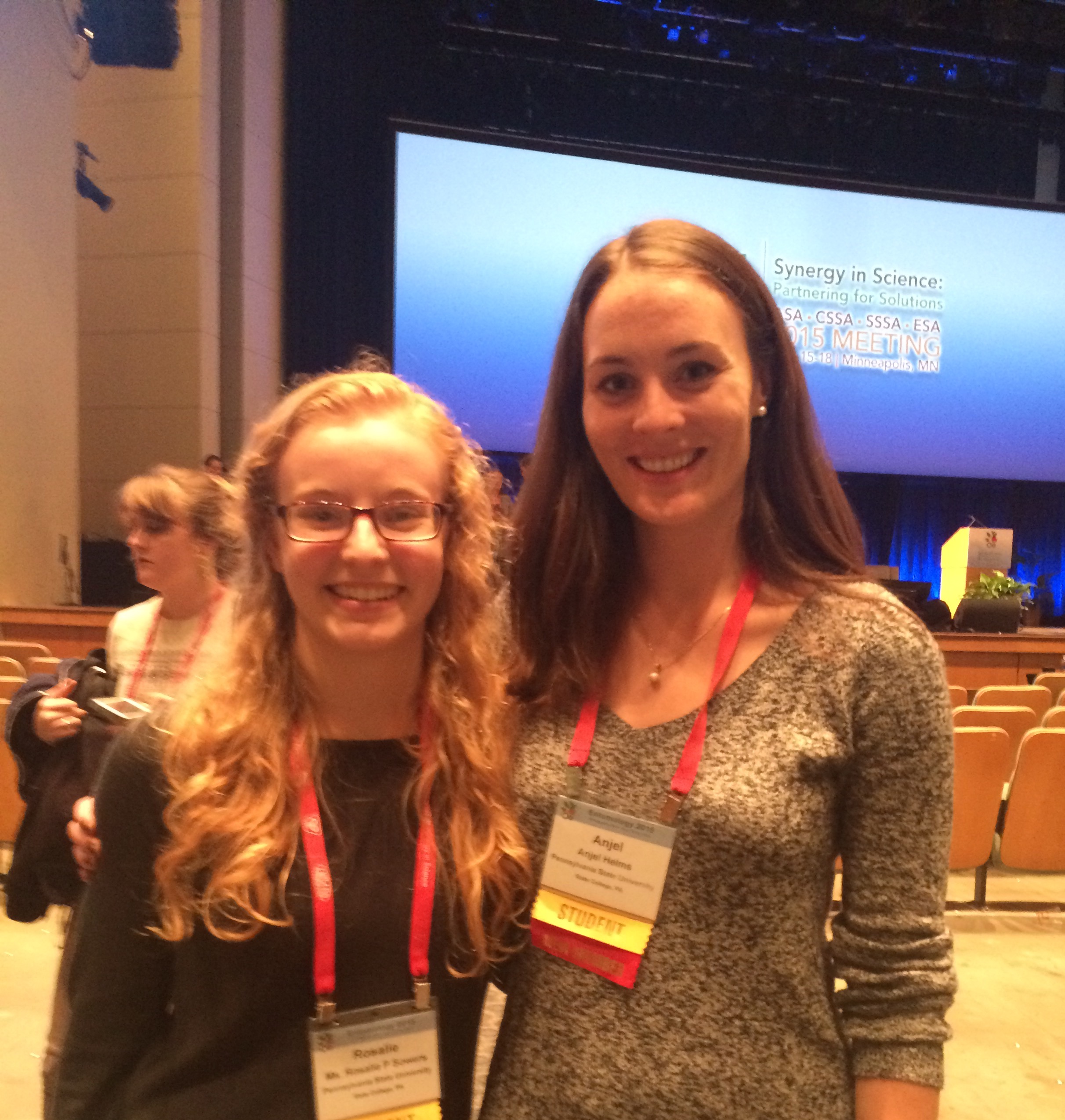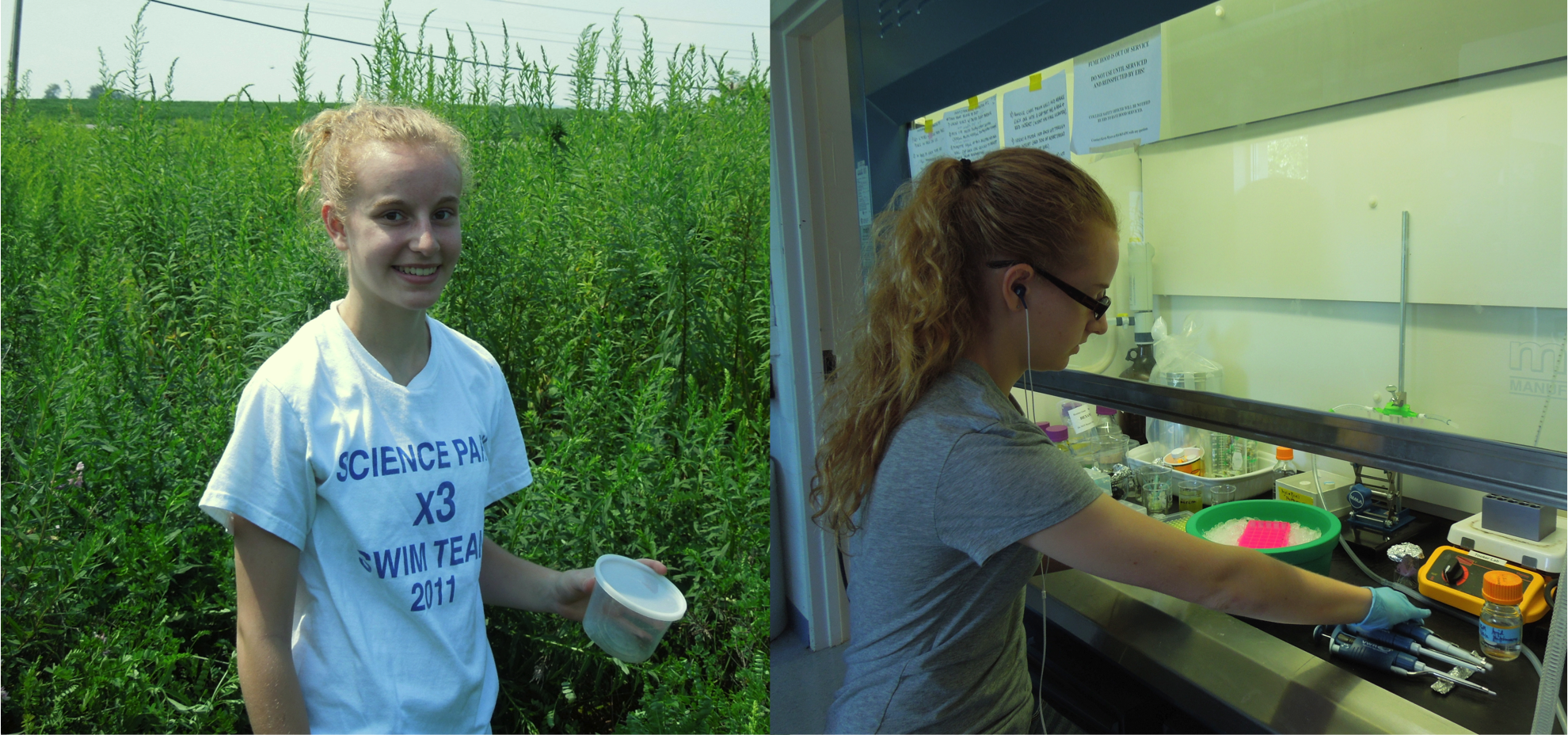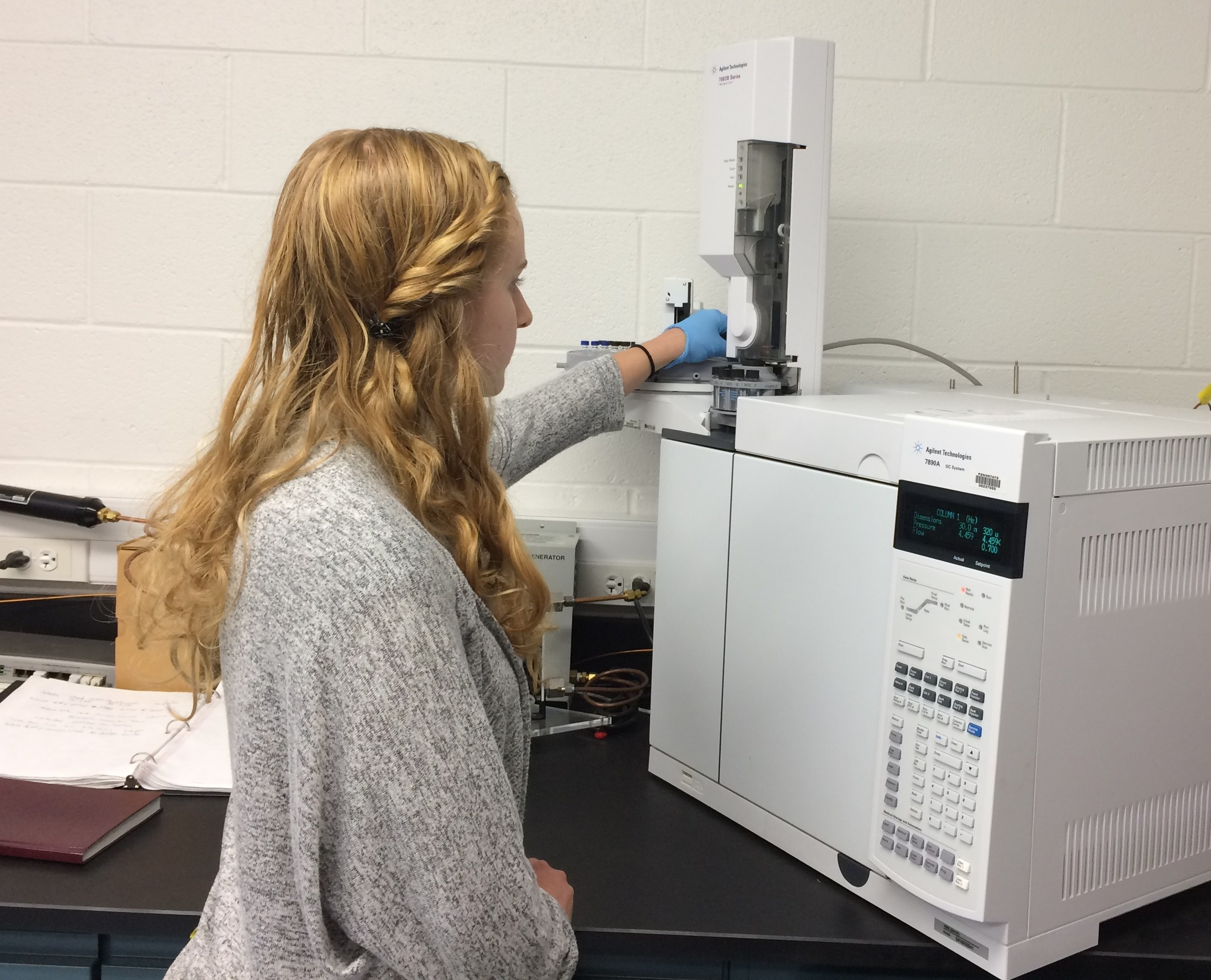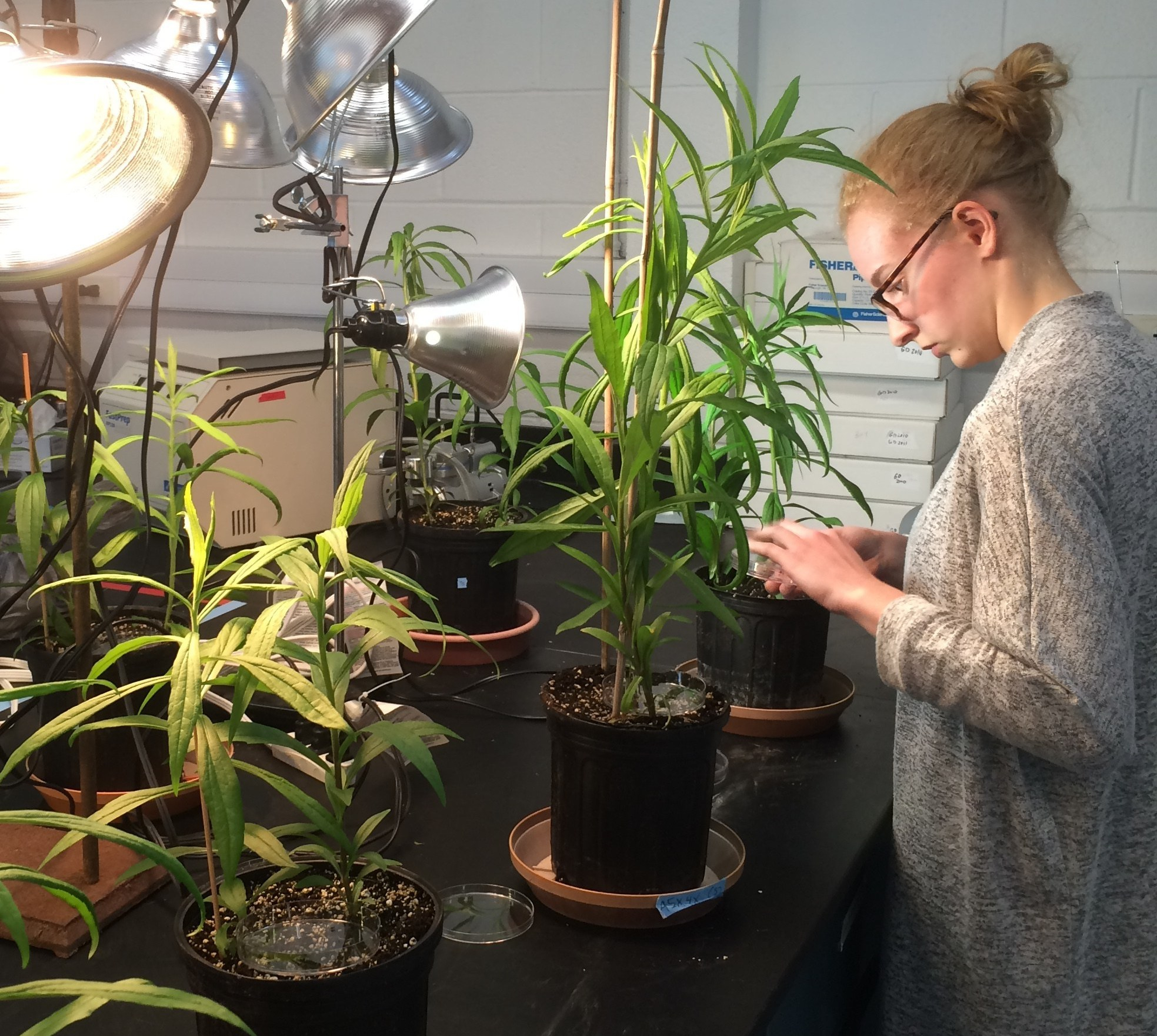Our paper examining trade-offs between anti-herbivore defenses in tall goldenrod was recently accepted at Arthropod-Plant Interactions (Yip et al 2019)!
This project was started by Rosie Sowers who conducted research with us as a high school and undergraduate student. Rosie also presented this research at the Entomological Society of America meeting and was awarded the President’s Prize for best undergraduate student presentation.
 Rosie and Anjel at the ESA meeting
Rosie and Anjel at the ESA meeting
Here we investigated whether goldenrod plants with an architectural defense, effective against gall-forming flies, experience a trade-off in their defense against goldenrod aphids. A minority of tall goldenrod genotypes exhibit a “ducking” morphology, where the tip of the apical stem bends downward. Previous research by Wise and colleagues found that ducking plants were less apparent and thus better protected against gall-forming herbivores that attack the apical buds. We hypothesized that signaling related to the ducking defense might interfere with investment in chemical defenses, making ducking plants more susceptible to some herbivores, such as goldenrod aphids. To test this hypothesis, we compared aphid survival and preference on ducking and erect genotypes and measured terpenoid concentrations to determine whether plant investment in these compounds was correlated with either ducking or aphid performance. We found that aphids had higher survival on ducking plants and typically preferred ducking vs. erect plants. However, we did not find a correlation between ducking and plant terpenoid concentration, indicating a different mechanism is likely responsible for the differences we observed in aphid preference and performance.


 Rosie collecting goldenrod herbivores, analyzing plant samples, and conducting aphid- choice tests
Rosie collecting goldenrod herbivores, analyzing plant samples, and conducting aphid- choice tests
Recent Comments